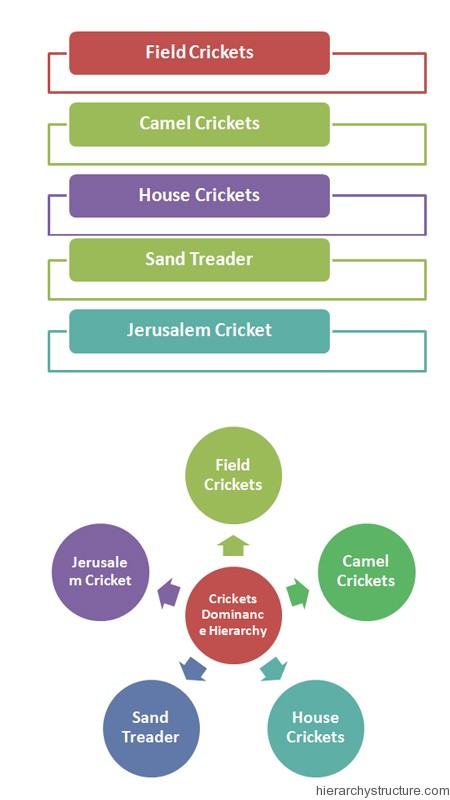Dominance hierarchies are an inevitable feature associated with most of the animal groups. The hierarchy is also referred to as pecking order. The various factors responsible for the evolution of the dominance hierarchies are physical superiority, the resistance to unfavorable situations and the fighting ability. The animals exhibit dominance for certain reasons. The reasons may be defending their territory, to maintain power within the group or seeking a mate. In this particular article, we will discuss in details about the crickets dominance hierarchy.
Crickets are one type of insects belonging to the Gryllidae family and are somehow similar to the grasshoppers. They are nocturnal and are harmless to the human beings. According to the theories of biologist Richard Alexander, if a cricket tends to win a lot of fights, it becomes even more capable of winning in the subsequent fights. On the other hand, if it loses fights; then it becomes submissive. This type of behavior of the crickets has eventually created a dominance hierarchy among the particular animal group.

There are various types of crickets existing in the surroundings. Below is the list:
- Field Crickets
- Camel Crickets
- House Crickets
- Sand Treader
- Jerusalem Cricket
Field Crickets
Most of the field crickets are black field crickets with short rounded wings. The field crickets are found in the overgrown grasses, lawns and flower beds. They are strongly attracted to light. The life cycle of the field crickets is approximately 90 days which is one of the longest in the family of crickets. They are characterized by their loud chirping in the late evenings and at night.
Camel Crickets
The camel crickets are quite different from the field crickets in terms of physical characteristics. They have a humped back and are generally one and half inches long. Camel crickets are wingless and they do not chirp. These crickets are powerful jumpers. They are usually found under wooden logs and stones. These are quite different from their entire family of crickets.
House Crickets
The house crickets are light yellow in color and grow to about one inch. The life span of these crickets is about eight weeks. They are commonly found in the outdoors and they enter into the indoors in the late summer.
Sand Treader
The sand treader is a type of cricket prevalent in the crickets dominance hierarchy and is mainly found in the sand dunes. These crickets are very active at night and due to their abundance in deserts & sands they have got their name. They are pale colored and have strong bristles, which are very helpful in digging. They use their limbs and antennas, while searching for food. They use their sense of touch to search for food effectively.
Jerusalem Cricket
They are also known as potato bugs. They are not true crickets. They only resemble the crickets in the fact that they drum their abdomen to produce mating songs. They also create a hissing sound to keep the predators away. They have black and orange band around their body.
Know more about Cricket Team Hierarchy Click here
